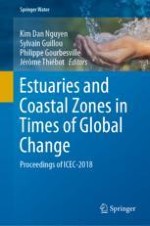2020 | OriginalPaper | Chapter
Assessing the Impact of Rows of Tidal-Stream Turbines on the Overtides of the M2
Authors : D. Potter, S. Ilić, A. Folkard
Published in: Estuaries and Coastal Zones in Times of Global Change
Publisher: Springer Singapore
Activate our intelligent search to find suitable subject content or patents.
Select sections of text to find matching patents with Artificial Intelligence. powered by
Select sections of text to find additional relevant content using AI-assisted search. powered by
